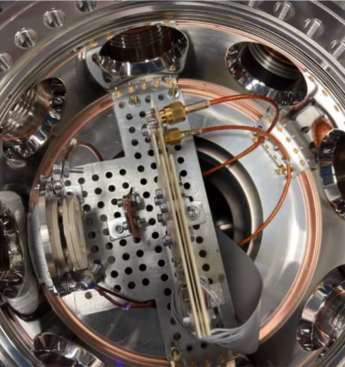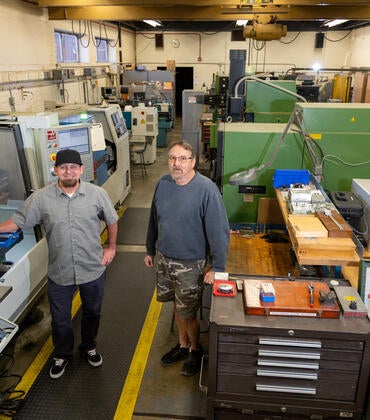A research team co-led by Boerge Hemmerling at the University of California, Riverside, has succeeded in confining free electrons in a special trap originally designed to trap atomic ions.

“The goal is to establish a new quantum bit — or qubit — that is based on trapped electrons,” said Hemmerling, an assistant professor of physics and astronomy. “To the best of my knowledge, at UCR my lab is currently the only one trapping and cooling free particles — atoms, molecules, or electrons.”
The research was done in collaboration with a group at UC Berkeley that trapped electrons a few years ago in a similar system.
According to Hemmerling, the new qubit could enable new quantum computing architectures that are potentially more “scalable” than ions or superconducting qubits. Scalable in this context means the number of qubits can be controlled, which is an essential feature in quantum computing.
“Although physicists have extensively used electrons for precision measurements, nobody has ever encoded quantum information in them,” Hemmerling said. “The successful trapping is the first step toward that direction.”
Qubits used to store quantum information are vulnerable because they tend to lose the information.
“This is a big hurdle,” Hemmerling said. “Securing a quantum state is very difficult due to its sensitivity. Any influence from the environment — radiation, noise from electronics — can disturb the quantum state. As a result, researchers work extremely hard to make the quantum information prevail.”
Hemmerling explained that in labs, ions have successfully been used to store information for up to a second. The electron is like a light ion. Potentially, quantum information can be stored in an electron for seconds. Further, this can be achieved on a more scalable platform.

“In our trap, we will have an electron-based qubit that gets the best of both worlds,” he said. “You don’t need optics, which is a major technical challenge for scaling trapped ion qubits up to large numbers. Unlike an ion, an electron has no optical transition. Electrons can be manipulated with off-the-shelf microwave technology — the same technology superconducting qubits use. So, electron qubits take the best of both worlds: You use the well-established, scalable microwave technology in superconducting qubits and you expect the high performance of trapped ions in one system.”
The trap Hemmerling and his team used can store both positive and negative charges and, with some modifications, a heavy particle and a light particle at the same time. Consequently, the trap could confine positrons and antiprotons, which are needed to make antihydrogen, the antimatter counterpart of hydrogen. Studying antihydrogen could explain why the observable universe has more matter than antimatter.
“If, as a proof of principle, we can trap electrons and ions at the same time, it would translate into trapping positrons and antiprotons,” Hemmerling said. “The goal is to make more antihydrogen for better measurements, exploring antimatter, as well as matter-antimatter asymmetries. While the proof-of-principle experiment can be done in our lab at UCR, an antihydrogen experiment will use a trap to be connected to an antiproton source at a collider.”
Zijue Luo, a graduate student in Hemmerling’s lab, made significant contributions to the research. Hartmut Haeffner, a professor of physics, led the UC Berkeley team.
The research was supported by grants from the Air Force Office of Scientific Research, or AFOSR, and UC Office of the President. The views and conclusions expressed in this article do not necessarily represent AFSOR’s official policies or endorsements.
Header image credit: aleksandarnakovski/iStock/Getty Images Plus.




